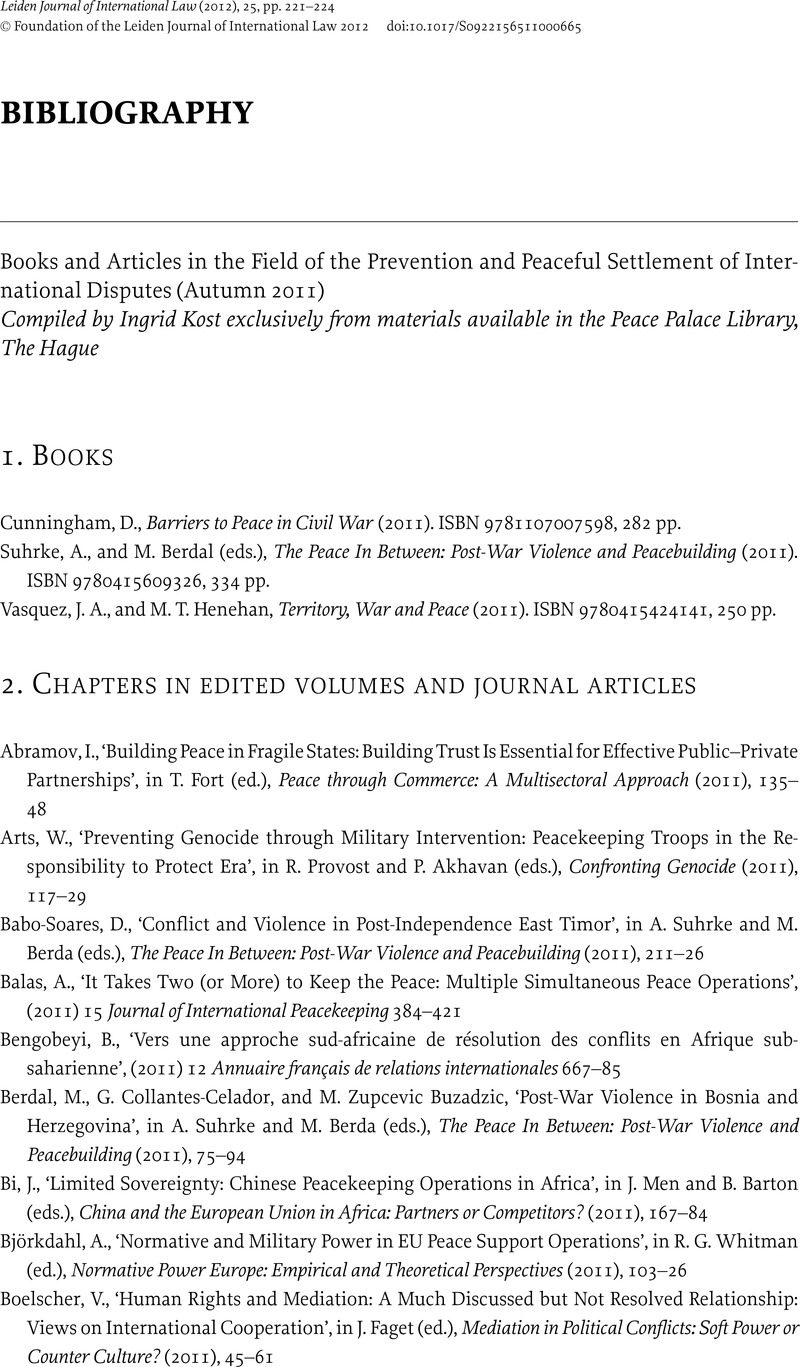Jucker, M., ‘The Continuity of Values, the Rhetoric of Peace, and Friendship during the End of the Hundred Years’ War: The Peace of Ensisheim in 1444’, in
Marauhn, T. and
Steiger, H. (eds.),
Universality and Continuity in International Law (
2011),
375–91
Google Scholar 